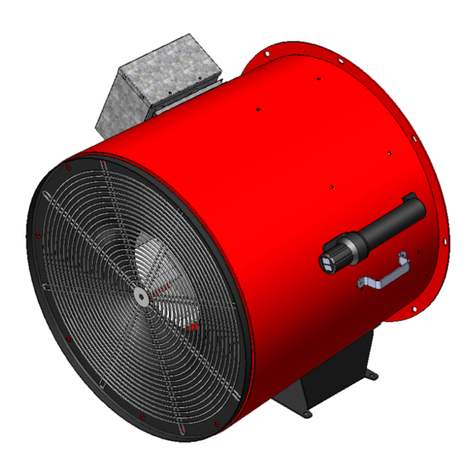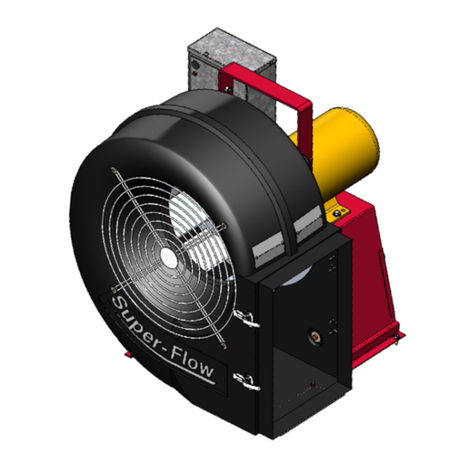
DIRECT DRIVE CENTRIFUGAL FAN – AERATION FAN
8210-30029 R0 3
CONTENTS
1. Introduction ............................................................................................................................................ 5
1.1 General Description................................................................................................................... 5
1.2 Serial Number Location............................................................................................................. 5
2. Safety....................................................................................................................................................... 6
2.1 Safety Alert Symbol and Signal Words...................................................................................... 6
2.2 General Safety Information....................................................................................................... 6
2.3 Fan Safety .................................................................................................................................. 7
2.4 Drives and Lockout/Tagout Safety ............................................................................................ 7
2.4.1 Electric Motor Safety.................................................................................................. 8
2.5 Personal Protective Equipment................................................................................................. 8
2.6 Safety Equipment ...................................................................................................................... 9
2.7 Safety Decals ............................................................................................................................. 9
2.7.1 Decal Installation/Replacement................................................................................. 9
2.7.2 Safety Decal Locations and Details ............................................................................ 9
3. Pre-Installation ..................................................................................................................................... 11
3.1 Receiving and Inspection ........................................................................................................ 11
3.2 Handling the Fan ..................................................................................................................... 11
3.3 Storing the Fan Before Installing............................................................................................. 11
4. Installation ............................................................................................................................................ 12
4.1 Installation Safety.................................................................................................................... 12
4.2 Elevated Fans........................................................................................................................... 13
4.3 Slab Mounted Fans.................................................................................................................. 14
4.4 Vibration Isolators ................................................................................................................... 14
4.5 Ducting Requirements............................................................................................................. 15
5. Operation .............................................................................................................................................. 16
5.1 Operation Safety ..................................................................................................................... 16
5.2 Air Pressure and Suction ......................................................................................................... 16
5.3 Start-Up and Break-In.............................................................................................................. 16
5.4 Fan Rotation and Orientation ................................................................................................. 17
5.5 Emergency Stop....................................................................................................................... 18
5.6 Shutdown ................................................................................................................................ 18
5.7 Storage..................................................................................................................................... 18
6. Maintenance ......................................................................................................................................... 19
6.1 Maintenance Safety ................................................................................................................ 19
6.2 Maintenance Schedule............................................................................................................ 19
6.3 Visually Inspect the Centrifugal Fan........................................................................................ 20
6.4 Cleaning the Fan Blade and Housing ...................................................................................... 20
6.5 Servicing and Part Replacement ............................................................................................. 20
6.5.1 Fan Wheel Replacement .......................................................................................... 21
6.5.2 Fan Wheel/Propeller Balance .................................................................................. 22
6.5.3 Motor Bearings Maintenance .................................................................................. 22
6.6 Replacement Parts .................................................................................................................. 29
7. Troubleshooting.................................................................................................................................... 30
8. Appendix ............................................................................................................................................... 33






























